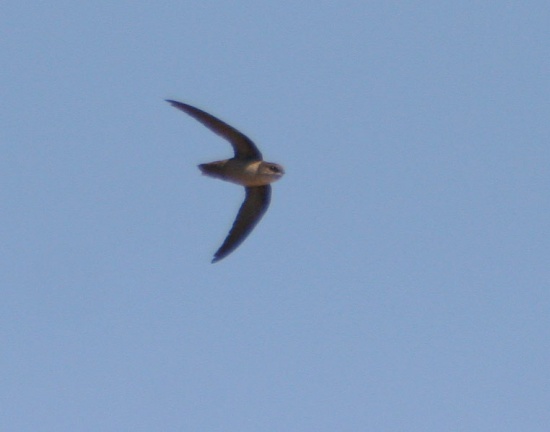| This article is incomplete. This article is missing one or more sections. You can help the BirdForum Opus by expanding it. |
- Chaetura vauxi
Identification
10.7 to 11.2 cm
- Dusky black head, upperparts and wings
- Grey brown underparts, rump and tail coverts
- Paler grey throat (whiter in northern birds)
Sexes similar Juveniles: dusky bases to the throat feathers
Distribution
North, Central and South America
North America: Canada, British Columbia, Alaska, Alabama, Arizona, California, Idaho, Montana, Nevada, Oregon, Tennessee, Utah and Washington
Central America: Mexico, Baja California, Baja California Sur, Guatemala, Belize, El Salvador, Honduras, Nicaragua, Costa Rica and Panama
South America: Venezuela
Taxonomy
C. v. andrei is now again regarded as full species, Ashy-tailed Swift.
Subspecies[1]
Six subspecies are recognized:
- C. v. vauxi:
- C. v. gaumeri:
- South-eastern Mexico (Yucatán Peninsula) and Cozumel Island
- C. v. tamaulipensis:
- Eastern Mexico (south-western Tamaulípas and south-eastern San Luis Potosí)
- C. v. richmondi:
- Southern Mexico to Costa Rica and extreme western Panama (Chiriquí)
- C. v. ochropygia:
- Eastern Panama
- C. v. aphanes
- Northern Venezuela (coastal ranges, from Lara and Yaracuy east to Sucre and Monagas)
An additional subspecies warneri is generally considered invalid[1].
Habitat
Mountains and foothills, mainly above 700 m, forests and towns.
Behaviour
Breeding
The cup-shaped twiggy nest is built in a tree hole or cliff crevice. The clutch consists of 3 white eggs.
Diet
Includes flying insects, such as beetles, wasps, termites and flying ants.
References
- Clements, J. F., T. S. Schulenberg, M. J. Iliff, S. M. Billerman, T. A. Fredericks, J. A. Gerbracht, D. Lepage, B. L. Sullivan, and C. L. Wood. 2021. The eBird/Clements checklist of Birds of the World: v2021. Downloaded from https://www.birds.cornell.edu/clementschecklist/download/
- Avibase
- Wikipedia
Recommended Citation
- BirdForum Opus contributors. (2025) Vaux's Swift. In: BirdForum, the forum for wild birds and birding. Retrieved 3 April 2025 from https://www.birdforum.net/opus/Vaux%27s_Swift
External Links
GSearch checked for 2020 platform.




